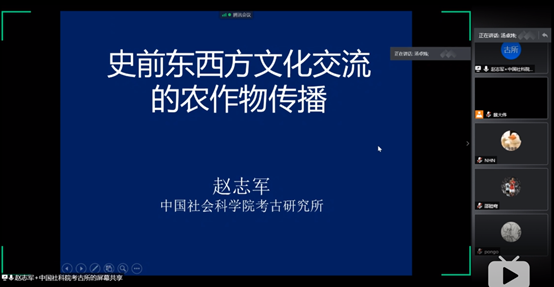Zhao Zhijun, a researcher from the Institute of Archaeology of the Chinese Academy of Social Sciences, delivered the third academic report titledCrop Dissemination of Prehistoric Eastern and Western Cultural Exchanges, one of a series web-based lectures on theEarly Eastern and Western Cultural Exchanges from a Multidimensional Perspectiveat Tencent Meeting (ID 673 766 077) at 10:00-11:30 on the morning of June 27. This lecture is the 83rd in a series of lectures on the brand forumFrontier Archaeology and Chinese Forum of Cultural Identityof the Research Center for Chinese Frontier Archaeology (RCCFA), Jilin University. There are four major agricultural origin centers in the world: West Asia, China, Central and South America, and Northern Africa. The millet originating in China, especially the glutinous millet, spread westward to the European plains and became one of the crop varieties in the local historical period of agricultural production; the wheat crops originating in the central region of West Asia, especially the wheat, spread eastward to China, replacing millet as the main crop of dry farming in northern China. New discoveries of plant archaeology confirmed that the spread of crops in cultural exchanges between the East and the West can be traced back to the prehistoric period 4,000~5,000 ago. The routes of spread should mainly include the grassland passage across the Eurasian continent, and the oasis passages along the northern foot of the Qilian Mountains and the northern and southern edges of the Takla Makan Desert, namely the Silk Road in the historical period.

Hosted by: Prof. Cai Dawei, Deputy Director of the RCCFA.